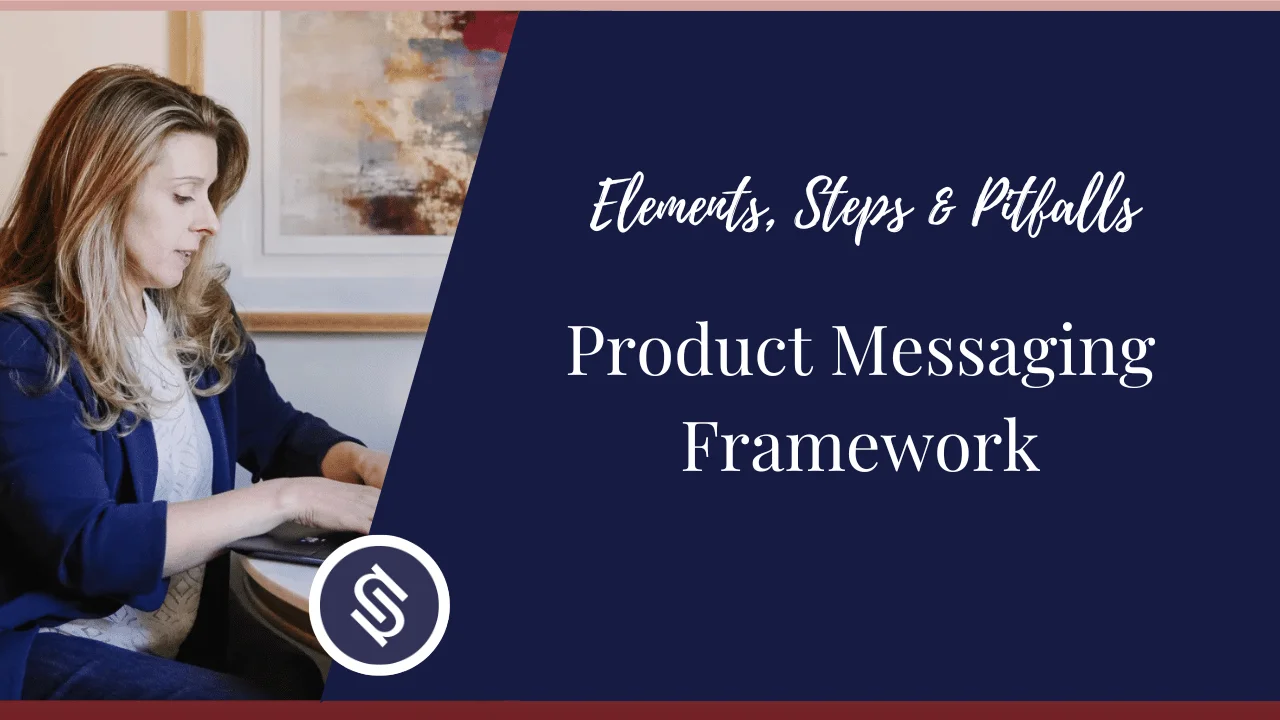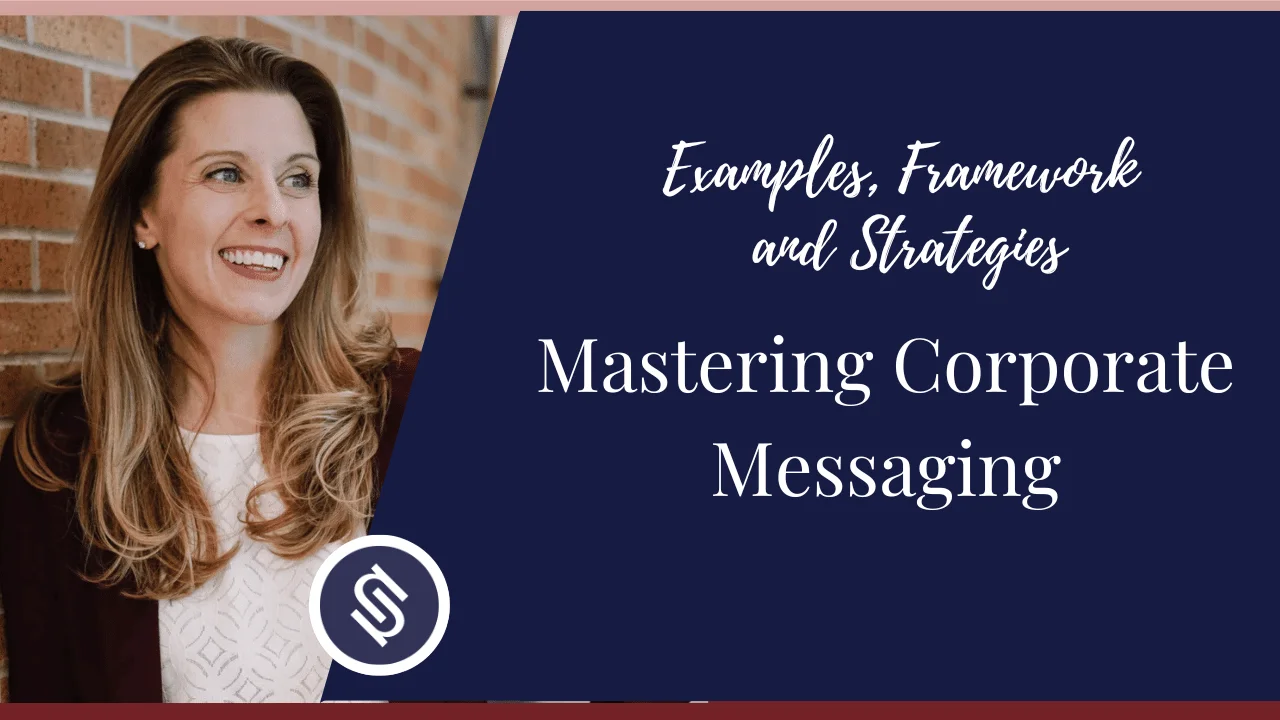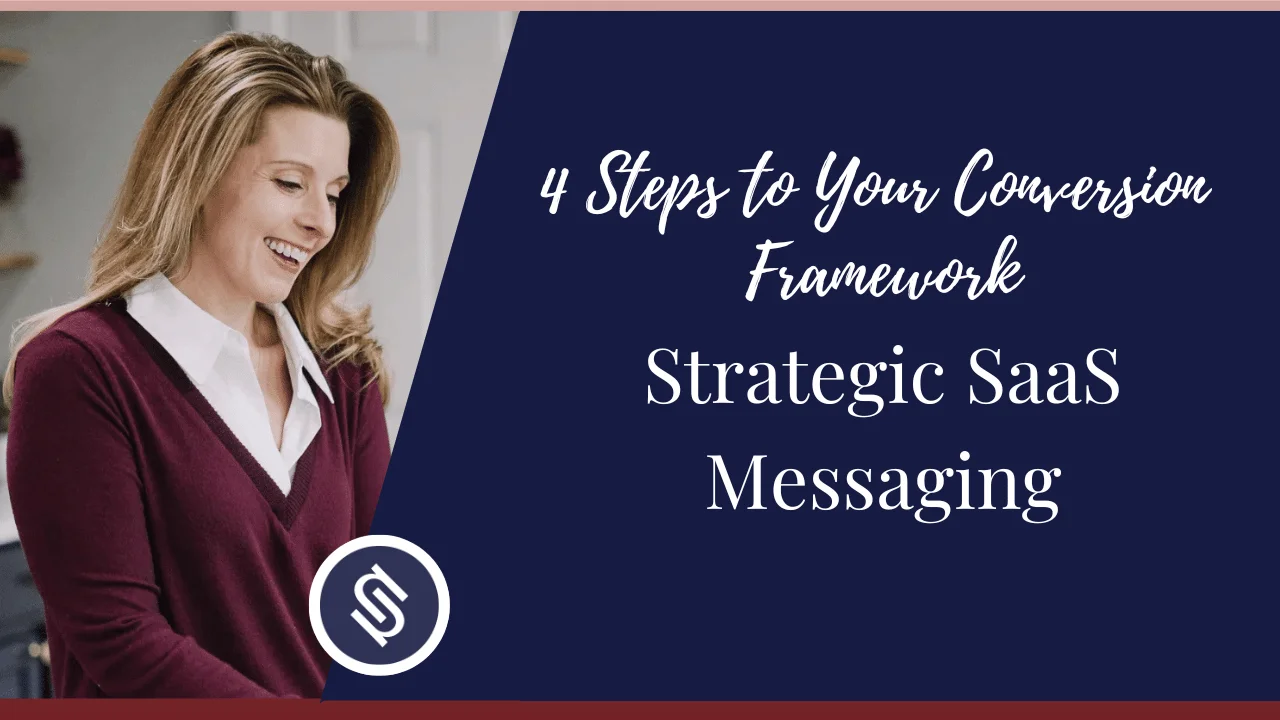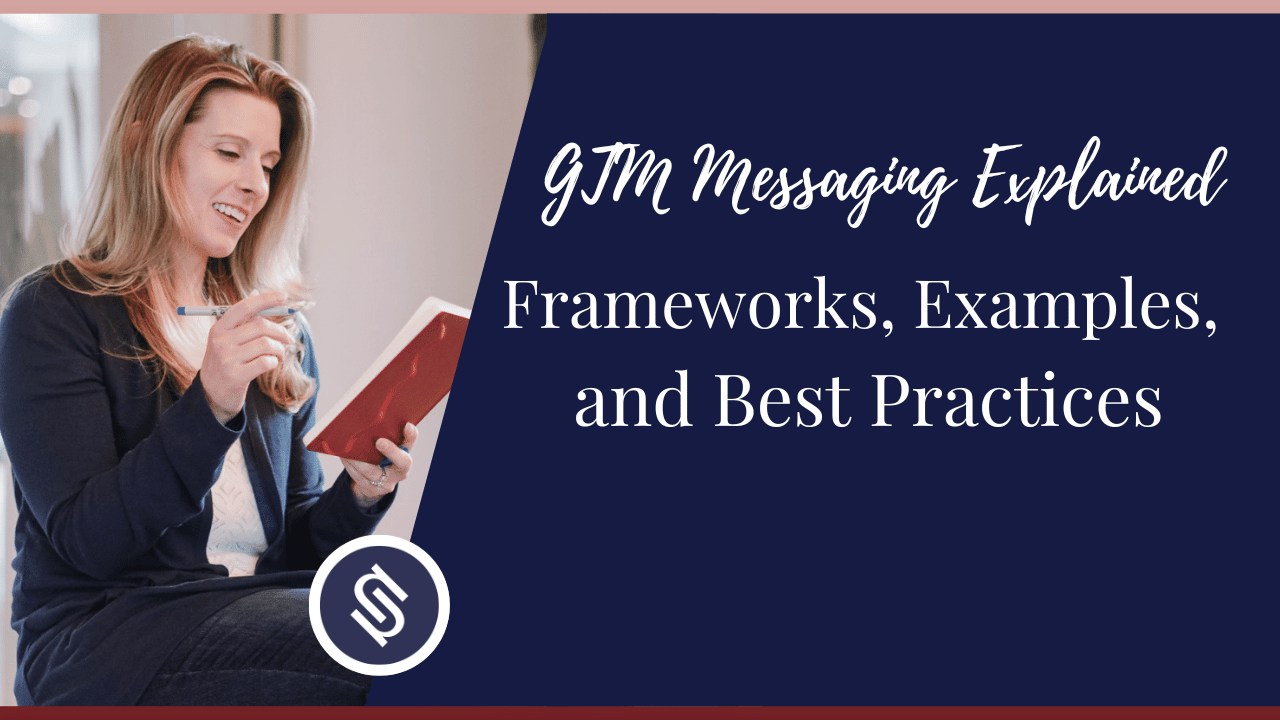A business might have developed an excellent product that addresses the market needs, but its messaging might not be effective in driving sales. The solution is to keep the messaging on-brand and relevant to the audience.
That’s where a product messaging framework comes in to act as a foundation that makes every conversation about a product sharper and effective.
This article discusses everything about product messaging and how to use a messaging framework to write content that resonates with the audience and drives more sales.

TL;DR – How to Create Product Messaging
Check out an overview of how to create product messaging:
- Define the product’s core value
- Research the audience
- Conduct an internal review of the message
- Test the messaging and analyze the results
- Finalize the messaging
While these steps are key, any strategy first needs a messaging framework to ensure compelling product messages that stand out at every touchpoint.
As a brand messaging strategist, I can partner with you to create a well-crafted messaging framework that helps your team produce consistent, compelling content.
Schedule a 20-minute discovery call to see how we can work together on your marketing campaign and create compelling messages that get sales.

What is Product Messaging?
Product messaging is how a brand communicates its product’s value to the target market.
It has two main elements:
- Product Description: What the product is, why it exists, and who needs it.
- Product Benefits: Tell potential customers what solutions the product provides and what pain points it addresses. These explain why the product is worth the market’s time and money.
Without a clear product message, potential customers may fail to understand how the product solves their pain points.
In other words, it’s a value messaging strategy focused on communicating the product and its benefits.
What is In-Product Messaging?
In-product messaging is a product messaging strategy that happens while users actively use a product or navigate a website.
Examples of this type of messaging are:
- Online chats
- Tooltips
- Product walkthroughs
- Update alerts
- Surveys
Think of those message pop-ups that appear as you navigate a website or receive notifications while using an app.
These help personalize customer experience, reinforce your product’s value, and provide further support.

What is Dynamic Product Messaging?
Dynamic product messaging is another messaging strategy that uses AI to further tailor the customer experience and deliver messages for specific interactions and buyer stages.
This tactic draws from consumer psychology and an in-depth understanding of each buyer’s persona to influence customer choice.
Examples of dynamic product messaging are:
- Product recommendations: An example is the “You might also like” pop-up that lists similar offerings.
- Product badges: Depending on individual user data, badges can highlight price points or product features like “Bestseller” or “50% off”.
- Notifications about customer activity: Examples of this are those that highlight scarcity (“Limited time offer!” or “Few seats left”) and customer behavior (350 other people bought this product today”).
Messaging vs. Positioning
Positioning is what sets your product apart from similar offerings and dictates how the audience should perceive it.
On the other hand, messaging is how a business communicates the product’s value to potential customers.
When creating a messaging hierarchy, a brand must establish the product’s positioning to communicate its benefits to the audience effectively.
Why is Product Messaging Important?
Product messaging is crucial for a marketing strategy, mainly because to convert visitors into paying customers, a brand needs to communicate clearly and compellingly what the product is about.
Here are other ways that product messaging benefits a business:
- Direct the ICP’s understanding of a product: A business gets to tell–in the most impactful way–what to offer the ideal customer profile (ICP). This also ensures that their understanding of a product is correct.
- Convinces potential customers to buy: The product messaging is the main pitch. A brand has only a few seconds to capture the audience’s attention. Product messaging makes it count.
- Communicates a product as a solution: Effective messaging lets people know what pain points an offering addresses and how it can improve their lives.
- Differentiates a product from the competition: This gives a product a competitive edge, helping to move customers further in the buyer journey.

What is a Product Messaging Framework?
A product messaging framework structures the product messaging using a top-down hierarchy.
It starts with an umbrella statement that contains the value proposition, which is often the tagline, and proceeds to detail more specific information about the product, such as:
- Target audience
- Proof points or features that set a product apart
- Messaging pillars or themes that elaborate on a product’s value proposition
Product Messaging Examples
Looking for inspiration?
These real-world examples show how effective product messaging can impact marketing strategy:
1. Loom

Loom goes straight to the heart of what they’re about–a video recording service that boosts productivity. Because “one video is worth a thousand words.”
This product messaging works because of two main things:
- It succinctly yet compellingly describes the product and its audience.
- Captures attention with a hook above the fold.
When creating product messages, businesses should avoid being overly verbose.
Always assume that the target audience doesn’t have the time to read through a big block of text because they almost always don’t.
Loom does this well without sacrificing its product description. In fact, it invites people to learn more.
The placement of a demo video also works, especially because a video demonstrates their value proposition better than a catchy tagline–a clever way to walk the talk!
2. ClickUp
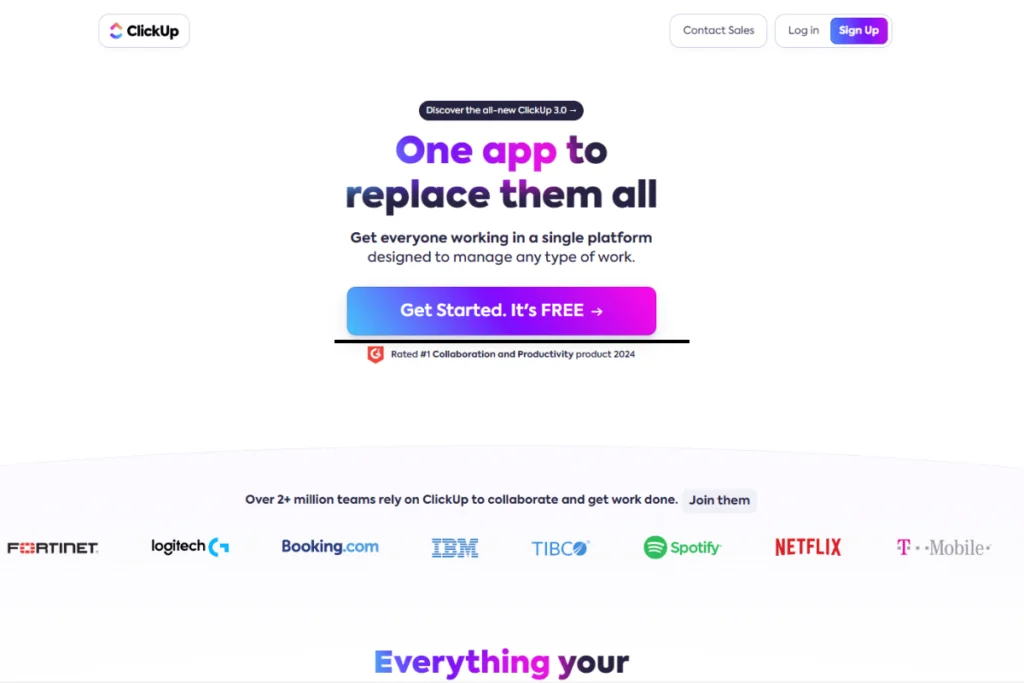
ClickUp has a great value proposition for project managers everywhere.
It’s one app to manage projects and teams. From docs to time tracking to chat, ClickUp has everything teams need for seamless workflows.
Their product messaging is impactful because it addresses one major pain point for people who work remotely: managing projects usually involves so many apps and messy processes that make collaboration challenging.
What’s even more impressive is that the audience understands that just by reading the tagline, “One app to replace them all.” The idea of trading all their apps for just one to manage their workflows is pretty enticing.
Drawing people in by showing how a product solves their problems is a sure way to get attention.
Key Elements of an Effective Product Messaging Framework
Some components are crucial when creating a product messaging framework that make sure the messages remain clear, consistent, and compelling.
Here are the essential elements a framework should have:
Value Proposition
The most crucial element of messaging is the unique value proposition.
It entails how a brand delivers what a product is about, ensuring it’s clear and communicates the product’s benefits in the most engaging way possible.
Positioning Statement
The positioning statement defines what sets a brand apart from the competition.
It highlights unique selling points that make a product the logical choice for your target market.
Target Audience
Does the message speak to the target audience? Is it communicated in their language? Do they relate to it? Does it resonate with them and influence their choices?
Being thorough in the market research is vital to deeply understanding what makes the market tick.

How to Build Product Messaging from the Ground Up
Follow this guide to create product messaging that ensures the brand is communicating clearly and effectively:
1. Define Your Product’s Core Value
When a brand has a great product, the audience needs to know that, too, to sell it. Digging deep to define the product’s core value (what it’s for and why it exists) is crucial to creating a compelling message.
Create an overarching statement that encapsulates the product’s description, its benefits, and its purpose.
2. Research Your Audience
Understanding the audience is vital to shaping messages that resonate. Define the ideal customer profile (ICP) or buyer persona.
To develop the ICP accurately, conduct market research, listen to industry-related online discussions, and evaluate existing customers’ experiences. With a clear understanding of what potential customers want, tie the product’s description to the pain points it addresses to create a unique value proposition.
3. Conduct an Internal Review of Your Message
The messaging has taken shape by this time, but it’s not quite there yet. Present the product message to key stakeholders (such as your sales, customer support, or product development teams) for review.
Gather their feedback and adjust the messaging accordingly before taking it public.
4. Test Your Messaging and Analyze Results
Once the refined messaging is ready, it’s time to test its effectiveness in a real-world setting.
Choose message testing methods that apply to the type of product and what stage of the product launch journey (before, during, or post-launch).
Testing methods can be either qualitative (such as interviews and open-ended questionnaires) or quantitative (short surveys, A/B testing, five-second tests, etc.).
Monitor how representative groups from the target audience respond to the message. Then, analyze the results to refine the message for the most impact further.
5. Finalize Your Messaging
The next step should be to conduct message testing to help with polishing the messaging.
Besides, involve different team members. For instance, the marketing team will do much of the heavy lifting pre-launch (preparing marketing collaterals like social media posts, blogs, and landing page copy). However, the sales, customer service, and product management teams ensure that the messaging stays consistent at all business levels.
If the process of creating a product messaging framework sounds too complicated, you can consider partnering with a messaging expert.
We can work together to ensure the framework supports your specific marketing campaigns and your team’s requirements.
Schedule a discovery call with me today to start a campaign that drives results.

Avoiding Pitfalls When Building Your Messaging Framework
A messaging framework is critical in helping businesses to create consistent messaging that communicates the brand’s values and sets it apart from competitors.
However, there are often mistakes brands make when building it that can hinder the overall effectiveness of the process. These include:
Focusing on the Product, Not Benefits
Creating a framework for the brand’s products or service offerings, rather than what customers will experience, is a surefire way to drive them away. It won’t inspire them to engage or take the desired action.
How to Avoid It: That’s why a practical messaging framework should factor in their pain points and what success looks like for them with a product or service.
Creating a Static Messaging Framework
A messaging framework should never be locked in, as different events may require brands to pivot their communications.
How to Avoid It: In this case, brands should use the strong feedback loop between teams to adapt the messaging framework in real time and throughout the campaign.
Creating a Complex Messaging Framework
A messaging framework should never fill a book, making it complex and failing to align with the targeted communications.
How to Avoid It: Create a strong messaging framework that features only the details the stakeholders need to act on a campaign. It should also use specific language so diverse users can still find it accessible and practical to use.
Not Training the Team On How to Use It
A real struggle is to make sure various stakeholders, from marketing specialists, the delivery team, content, and sales, stay on track with the messaging framework.
How to Avoid It: Create a framework that is practical to all these groups. Also, demonstrate to them how to apply it under the specific departments and the intended users. Be clear in communicating the value it brings in achieving business and team goals.

Steps to Turning Your Messaging Framework into Action
So, how do brands use the messaging framework to communicate their goals and values? Here’s how they implement it:
Share It with Stakeholders
The first step is to share the messaging framework with the stakeholders so they can use it when communicating in the real market.
They should understand how to communicate the product messages effectively.
Train the Team on Adopting It
The team should be aligned with the messaging framework to ensure the content they create is clear and relevant across all touchpoints.
So train team members to foster a culture that ensures content meets customers’ needs.
Monitoring the Market Feedback
Once a business has developed the messaging framework, it should define key performance indicators (KPIs) to track its impact and enable continuous improvement.
Review and Refine the Messaging Framework
Continue to monitor the messaging framework to ensure it remains effective and relevant. Check analytics, customer feedback, and market research to inform the changes.
Consistently Apply It Across All Marketing Channels
Consistently apply the messaging framework across marketing channels, including social media platforms, content marketing, email marketing, and public relations.
However, it’s essential to tailor the content to the platforms the audience is on and how they prefer to receive the messaging.

How to Improve Product Messaging
Developing various iterations is necessary, not an option, when crafting effective product messaging. It has to evolve as the audience and context evolve.
Here are ways to refine the message:
- Focus on the benefits, not the features: Your features are essential, but they should not be the main focus of your message. Instead, focus on what your product can do for your market–what problems it solves and how it can improve their lives.
- Leverage social proof: People naturally look to others’ experiences when trying something new. So, use social proof to boost your credibility and entice others to follow suit. This can be user testimonials, reviews, and expert recommendations.
- Tell a story: Shape your messaging using storytelling techniques to appeal to your audience’s emotions. For example, you can frame your message around the experiences of an ideal customer or a narrative that potential customers relate to.

Frequently Asked Questions (FAQs)
I’ve answered the following commonly asked questions about product messaging to help you understand the concept better:
How Can Product Messaging Influence Customer Perception?
Compelling product messaging influences customer opinions and behavior because it presents a product as the solution to pain points that an ideal customer profile needs addressing.
Shaping your messaging so that it not only resonates with customer experience but also aligns with their thought process, language, and aspirations makes it even more effective at drawing engagement.
What Techniques Can Be Used to Test the Effectiveness of Product Messaging?
You can test your messaging through either qualitative or quantitative methods.
Qualitative testing methods (such as interviews and online discussions) help you gain more in-depth insights into the opinions and feelings of your audience.
On the other hand, quantitative approaches (like surveys) provide feedback quickly from a larger group of participants.
What Role Does Audience Segmentation Play in Product Messaging?
Segmenting your audience allows you to target specific groups of people with messaging that exactly matches their profile, improving the chances of engagement and even leading to more conversions.
How Can Storytelling be Incorporated into Product Messaging?
Using storytelling techniques will help you create a more engaging and memorable message because they help you appeal to your audience’s emotions and humanize your brand.
Examples of storytelling techniques are:
- Show, don’t tell: Demonstrate why your product is worth the money by showing social proof. Highlight results existing customers have achieved using your product or feature an expert’s stamp of approval.
- Don’t bury the lede: Technically, it is a journalistic technique that will also help you craft your messaging with a laser focus on your product’s biggest selling points. Simply put, this expression means to start with the most important information.
- Breathe life to a character/s: People relate better with personal experience, so telling a story drawn from real-life experiences helps draw emotion from and create a connection with your audience.
Do I Need a Copywriter to Create a Product Marketing Messaging Framework?
No, a business doesn’t need a copywriter to create a product messaging framework.
Instead, they should consider a brand messaging consultant who can help define the ideal customer profile, define the value proposition, and understand the brand voice and story. These are all crucial elements in creating a practical messaging framework.
What Tools Can Help Me Build a Messaging Framework?
- Audience research tools, such as SurveyMonkey, to get clarity on who the audience is, their needs, and the messaging they prefer
- Collaboration tools such as Asana and Slack to help manage stakeholders’ reviews and approval of the messages
Conclusion
A product messaging framework serves as a guiding principle for unified messaging.
Remember, communicate a clear value proposition, demonstrate what sets the product apart, and understand and target the unique buyer persona. Dig deep to understand the product positioning, then amplify it with a messaging strategy.
Follow the 5 steps we’ve discussed to develop compelling product messages.
If you don’t have the time to create the messaging framework, hire an expert who can do it for you.
Let’s partner to create a messaging framework that ties your value proposition, positioning statement, and your target audience’s needs.
Book a discovery call with me to see how we can create high-converting messaging frameworks that align with business growth goals.


